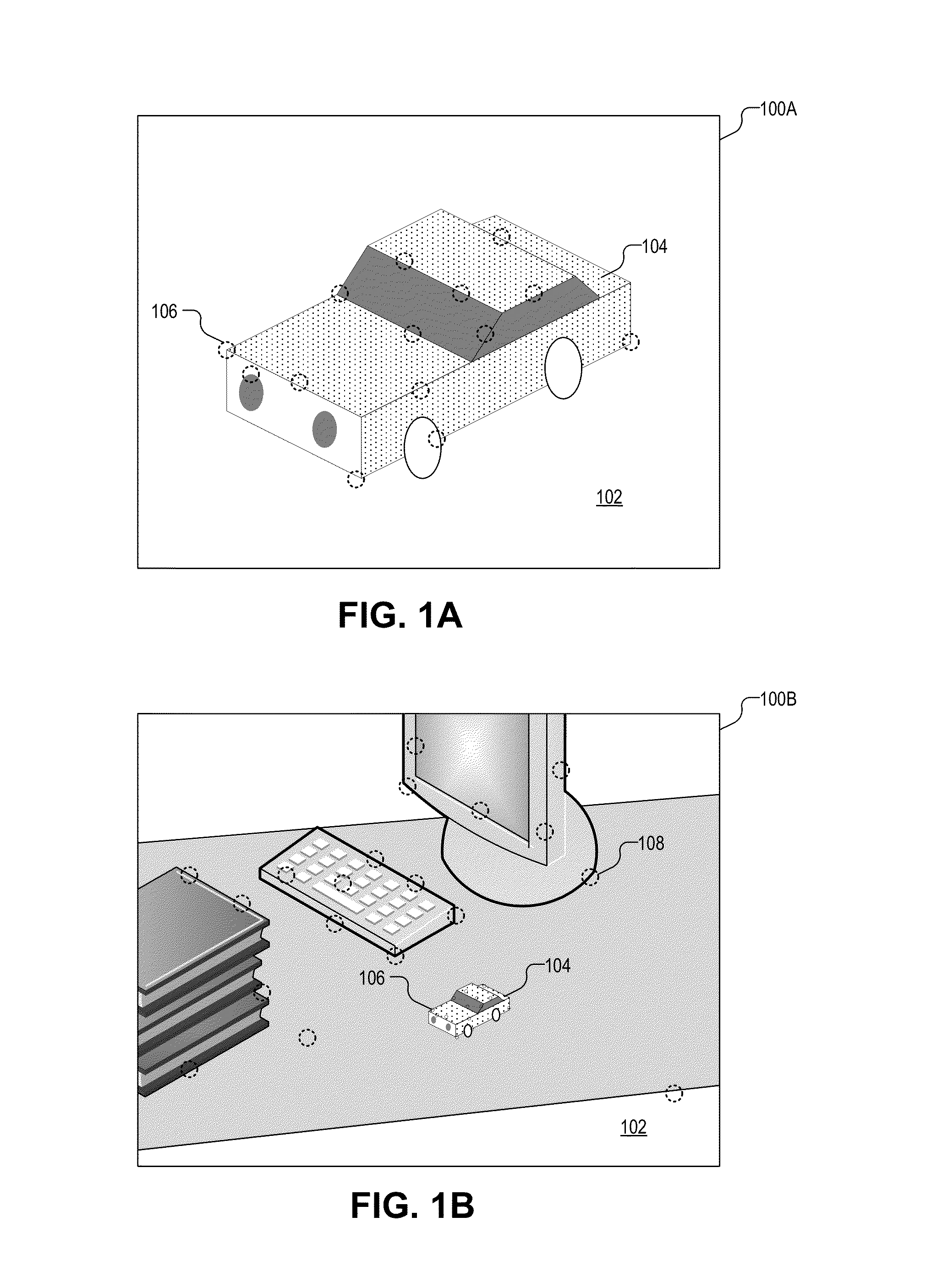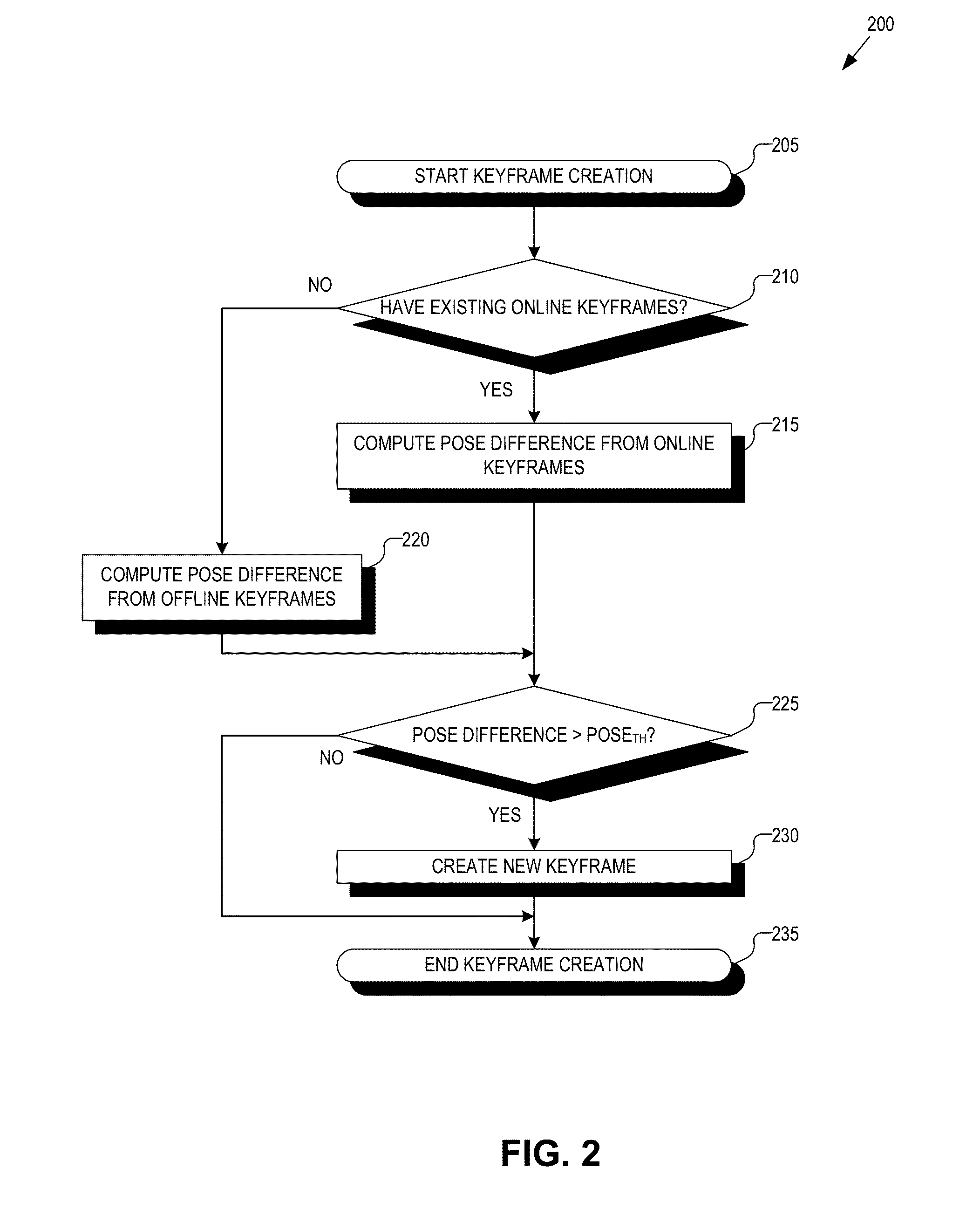Object tracking based on dynamically built environment map data
a dynamically built environment and map data technology, applied in image analysis, instruments, computing, etc., can solve the problems of significant tracking jitter, loss of accuracy of estimated camera pose, loss of tracking robustness, etc., to extend the range of trackable poses and improve the tracking robustness of any trackable object.
- Summary
- Abstract
- Description
- Claims
- Application Information
AI Technical Summary
Benefits of technology
Problems solved by technology
Method used
Image
Examples
Embodiment Construction
[0018]Reference throughout this specification to “one embodiment”, “an embodiment”, “one example”, or “an example” means that a particular feature, structure, or characteristic described in connection with the embodiment or example is included in at least one embodiment of the present invention. Thus, the appearances of the phrases “in one embodiment” or “in an embodiment” in various places throughout this specification are not necessarily all referring to the same embodiment. Furthermore, the particular features, structures, or characteristics may be combined in any suitable manner in one or more embodiments. Any example or embodiment described herein is not to be construed as preferred or advantageous over other examples or embodiments.
[0019]In one aspect, using environment map data in the tracking of a target object improves tracking robustness of any trackable object and extends the range of trackable poses beyond the visible range of the target and can even increase the trackin...
PUM
 Login to View More
Login to View More Abstract
Description
Claims
Application Information
 Login to View More
Login to View More - R&D
- Intellectual Property
- Life Sciences
- Materials
- Tech Scout
- Unparalleled Data Quality
- Higher Quality Content
- 60% Fewer Hallucinations
Browse by: Latest US Patents, China's latest patents, Technical Efficacy Thesaurus, Application Domain, Technology Topic, Popular Technical Reports.
© 2025 PatSnap. All rights reserved.Legal|Privacy policy|Modern Slavery Act Transparency Statement|Sitemap|About US| Contact US: help@patsnap.com



